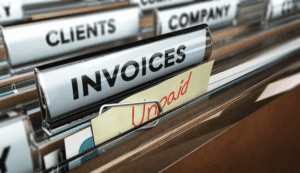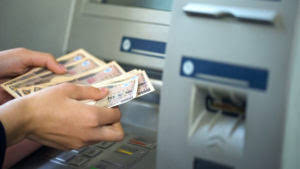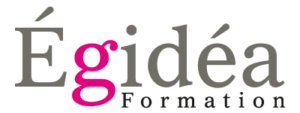
Prepaid expenses might include payments to insurance companies or contractors. The supply store will record a journal entry of $25,000 in the debit column of the general ledger for notes receivable. At the same time, it will also enter a credit of the same amount for the original accounts receivable to cancel out that transaction. In accounting , notes receivable are recorded as an asset on the balance sheet. To be precise, a payee records a note receivable as an asset, representing the principal owed by the customer.
Understanding Current Assets
The maturity date of a note receivable is the date on which the final payment is due. Furthermore, by transferring the note to Accounts Receivable, the remaining balance in the notes receivable general https://www.bookstime.com/articles/contribution-margin-income-statement ledger contains only the amounts of notes that have not yet matured. When the payment on a note is received, Cash is debited, Note Receivables is credited, and Interest Revenue is credited.

Would you prefer to work with a financial professional remotely or in-person?
- In some cases, the term of the note is expressed in days, and the exact number of days should be used in the interest computation.
- It removes the notes receivable from Company ABC for the original amount and documents interest earnings based on the duration the note remained outstanding.
- After 60 days of non-payment, notes payable are issued to MPC by RSP Co. for USD60,000 at an interest rate of 10% per annum and with a payment of USD20,000 due at the end of each of the next 90 days.
- The payee should record the interest earned and remove the note from its Notes Receivable account.
- A note receivable also comes with a predetermined interest rate after a mutual agreement between both parties.
- However, the customer will also pay an interest of $500 ($5,000 x 10%) on the note.
The invoice is due in 60 days, which is the normal procedure for the supply store. Finance Strategists has an advertising relationship with some of the companies included on this website. We may earn a commission when you click on a link or make a purchase through the links on our site. All of our content is based on objective analysis, and the opinions are our own.
- Adam Hayes, Ph.D., CFA, is a financial writer with 15+ years Wall Street experience as a derivatives trader.
- These solutions enable businesses to automate their entire account receivable process, accelerating cash flow, improving efficiency, and reducing operational costs.
- For information pertaining to the registration status of 11 Financial, please contact the state securities regulators for those states in which 11 Financial maintains a registration filing.
- On January 1, 2018, Waterways purchased merchandise in the amount of $250,000.
- Note receivable are receivables supported by a written statement by the debtor to pay a specified sum on a specified date.
- The date on which the security agreement is initially established is the issue date.
Written by True Tamplin, BSc, CEPF®

So, notes receivable appear as assets on the creditor’s or payee’s balance sheet, whereas notes payable appear as liabilities on the debtor’s or maker’s balance sheet. Notes receivable are different from other types of receivables, as here, the time frame for a customer to pay off the credit is extended. Unlike trade receivables, which are usually settled within a few weeks, notes receivable allow customers additional time to pay beyond standard billing terms. Additionally, a note receivable often includes a predetermined interest rate. The maker is obligated to pay both the principal amount and the interest as compensation for the extended payment period. The total discount $480 amortized in the schedule is equal to the difference between the face value of the note of $10,000 and the present value of the note principal and interest of $9,250.
What Type of Account is Notes Receivable?

The note presents all terms and conditions transparently to remove any possible misunderstandings between the parties in the future. If a restaurant purchases $25,000 of new equipment on credit from a restaurant supply store, the supplier will send the restaurant owner an invoice for the purchase. Our writing and editorial staff are a team of experts holding advanced financial designations and have written for most major financial media publications.
Payment of the Note
The journal entry will follow if a company pays another party directly in exchange for a note receivable. Notes receivable are financial assets of a business which arise when other parties make a documented promise to pay a certain sum on demand or on a specific date. Notes receivable are different are notes receivable a current asset from accounts receivable because they are formally documented and signed by the promising party, known as the maker of the note, to the party who receives the payment, known as the payee. The difference between a short-term note and a long-term note is the length of time to maturity.
- These include a one-year maturity date with eight percent interest accrued over the term.
- Release cash from customers using next-generation intelligent accounts receivable automation from Blackline.
- Notes receivable also arise when a business lends an amount to another party against a documented promise to pay it back.
- The accounting for a lease depends on whether it is a capital lease or an operating lease.
- Cash or bank is debited by the sum of principal amount and interest not yet received.
- Current Assets is always the first account listed in a company’s balance sheet under the Assets section.
What is Accounts Receivable Collection Period? (Definition, Formula, and Example)
- Non-trade receivables are the amounts due from third parties for transactions outside the primary course of business.
- Notes Receivable due in more than one year are listed in the Long-term Asset section of the Balance Sheet.
- As you’ve learned, accounts receivable is typically a more informal arrangement between a company and customer that is resolved within a year and does not include interest payments.
- The principal part of a note receivable that is expected to be collected within one year of the balance sheet date is reported in the current asset section of the lender’s balance sheet.
- It is also possible that some receivables are not expected to be collected on.



Leave a Comment